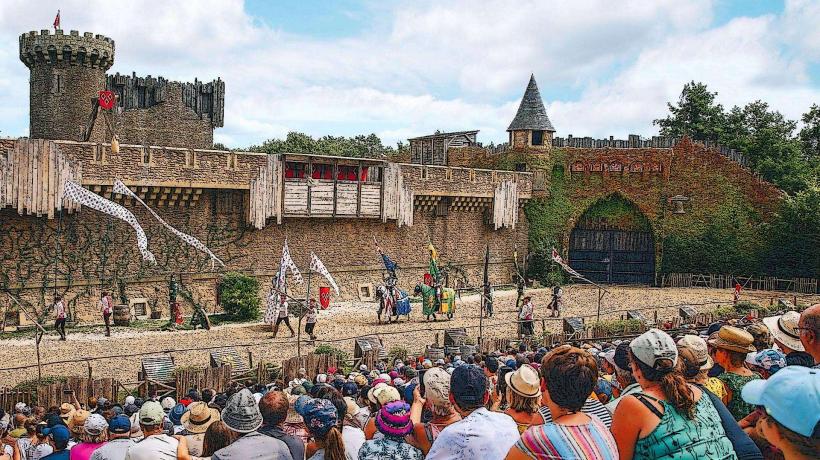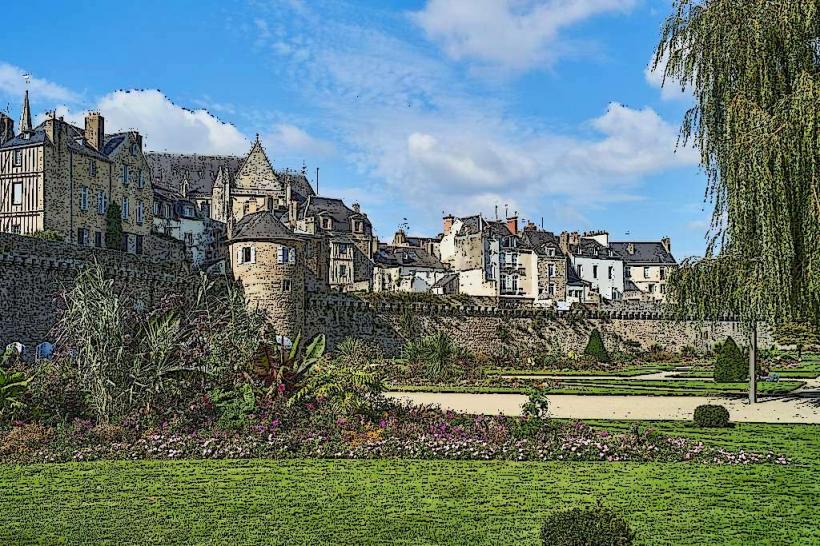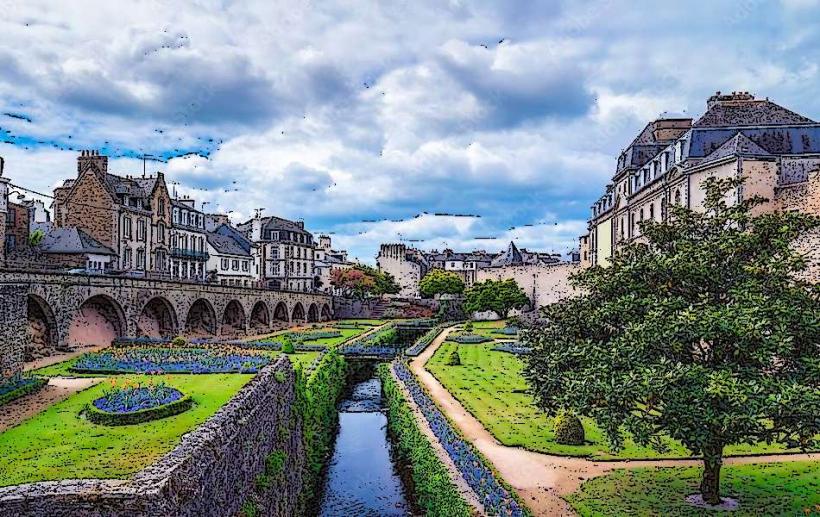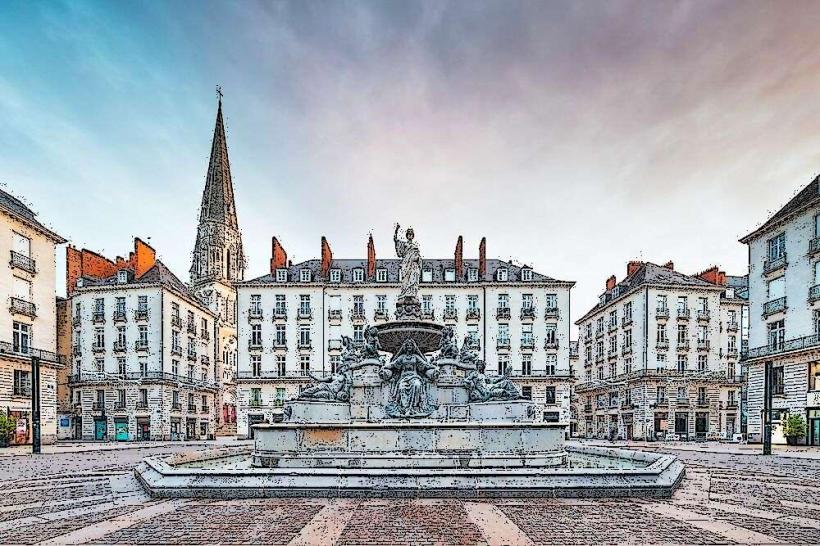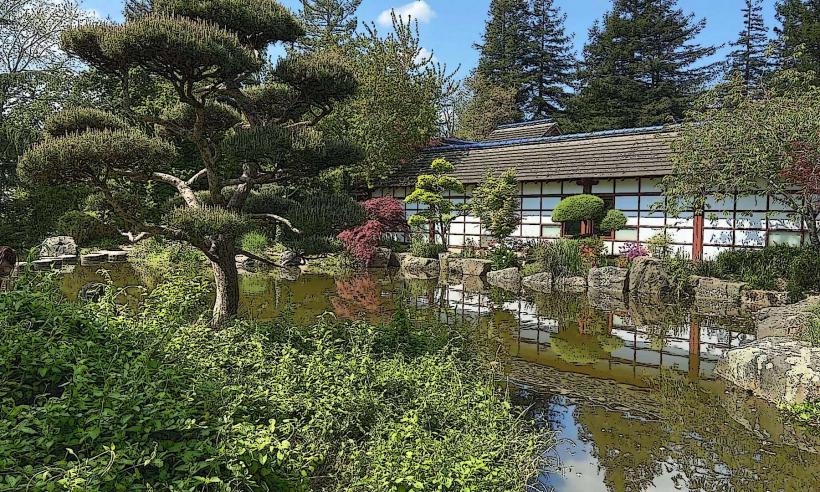Information
Landmark: Chateau des Ducs de BretagneCity: Nantes
Country: France
Continent: Europe
The Château des Ducs de Bretagne (Castle of the Dukes of Brittany) is a historic fortress and a significant cultural landmark located in Nantes, France. The château is deeply intertwined with the history of the region of Brittany and the city of Nantes, serving as both a royal residence and a symbol of the region’s historical autonomy. Here's a detailed overview:
1. History and Origins
- Construction: The Château des Ducs de Bretagne was originally built in the 13th century under the reign of François II, the Duke of Brittany. It was later expanded and fortified in the 15th century by his daughter, Anne of Brittany, who was both the Queen of France and Duchess of Brittany. The castle's construction was part of a larger effort to solidify Brittany's independence from France and to protect it from potential invasions.
- Role in Brittany's History: The château served as the residence of the Dukes of Brittany for several centuries. It played a central role in the political and cultural life of the region, particularly during the medieval and Renaissance periods. Anne of Brittany, one of the most notable figures in French history, spent significant time in the château. The castle also witnessed the political union of Brittany with the Kingdom of France in the early 16th century through the marriage of Anne of Brittany to King Charles VIII and later Louis XII.
- Political Shifts: Over time, the château underwent various changes, especially after the French Revolution when it was repurposed for different uses. In the 19th century, parts of the castle were demolished or altered, but much of the original structure has been preserved.
2. Architecture and Design
- Fortifications: The castle is surrounded by massive defensive walls and a deep moat, making it a classic example of medieval military architecture. The walls, along with four corner towers, provided defense against attackers, a necessary feature during the tumultuous period of Brittany’s semi-autonomy. The bastion walls and moat have been preserved and are visible to visitors today.
- Gothic and Renaissance Influences: The Château des Ducs de Bretagne showcases a combination of Gothic and Renaissance architectural styles, reflecting its long construction history. The Gothic-style towers, with their pointed roofs, and the Renaissance-style buildings, including the grand entrance gate, highlight the evolving architectural preferences during the château’s various phases of development.
- The Governor's Tower: One of the most significant features of the château is the Governor's Tower (Tour du Gouverneur), which is a striking example of medieval military architecture. It served as both a symbol of power and a defensive stronghold, offering excellent views of the surrounding area.
- The Castle Courtyard: The central courtyard is surrounded by various buildings and offers a serene space where visitors can explore the château’s architectural beauty. The facade of the castle is especially notable for its large windows and detailed carvings.
3. The Château Today: Museum of the History of Nantes
- Museum of Nantes: Today, the Château des Ducs de Bretagne houses the Musée d’Histoire de Nantes (Museum of the History of Nantes). The museum is dedicated to the rich history of the city and the region, offering an in-depth look at Nantes’ role in French and European history.
- Exhibitions: The museum’s permanent collection covers a range of subjects, from Brittany’s medieval past and the Age of Sail, to colonial history and modern industrial developments. The museum's exhibitions are spread across several rooms, each telling a different part of Nantes' fascinating story.
- Temporary Exhibitions: In addition to its permanent collection, the Château hosts temporary exhibitions, which explore themes such as art, history, and culture. These exhibitions often provide insight into the city’s historical connections with global trade, its role as a port, and its cultural development over time.
4. Visitor Experience
- Guided Tours: Visitors to the Château des Ducs de Bretagne can explore both the castle and the museum through guided tours. The guides provide detailed commentary on the history of the building, the significance of its architecture, and the role the château played in the political and cultural life of the region.
- Interactive Displays: The museum offers interactive displays and multimedia presentations, making it an engaging experience for visitors of all ages. Visitors can explore historical themes such as the life of Anne of Brittany, the castle’s military past, and the city’s evolution from a medieval town to a modern metropolis.
- Gardens and Courtyards: The castle is surrounded by beautiful gardens and courtyards, providing visitors with a peaceful environment to relax and enjoy the views of Nantes. The green spaces are especially pleasant during the warmer months, making it a great spot for a leisurely stroll.
- Panoramic Views: Visitors can also climb the Governor’s Tower for panoramic views of the city and the surrounding region. The view from the top offers a unique perspective of Nantes, with its historic district, the Loire River, and the modern aspects of the city.
5. Cultural Significance
- Symbol of Nantes: The Château des Ducs de Bretagne is a symbol of Nantes’ historical importance and its cultural heritage. It is a representation of the city’s position at the crossroads of different political and cultural influences, from the medieval period through to the present day.
- Anne of Brittany: The château is closely associated with Anne of Brittany, one of the most influential figures in French history. As the Duchess of Brittany and the only woman to marry two French kings, she played a crucial role in shaping the political landscape of the time. The castle remains a symbol of her legacy.
- Brittany's Autonomy: The Château des Ducs de Bretagne also symbolizes Brittany's historical desire for autonomy. The region of Brittany was fiercely independent for many centuries, and the castle’s role as the residence of the Dukes of Brittany is a reminder of the region’s proud history of self-governance.
6. Access and Location
- Location: The Château is located in the heart of Nantes, near the Place du Château. It is easily accessible from other important landmarks in the city, such as the Loire River, Place Royale, and the Nantes Cathedral. Its central location makes it a must-visit for tourists exploring the historic center of Nantes.
- Opening Hours: The Château is open year-round, and its hours of operation may vary depending on the time of year. It is generally open for visitors daily, with special hours during holidays and for particular events or exhibitions.
7. Conclusion
The Château des Ducs de Bretagne is an essential landmark in Nantes, offering visitors a deep dive into the city’s rich history. From its medieval origins to its role as a royal residence, and now as a museum, the château serves as a testament to the cultural, political, and architectural heritage of Nantes and Brittany. Whether you're interested in history, architecture, or simply exploring a beautiful landmark, the Château des Ducs de Bretagne is an unmissable experience in the heart of Nantes.

